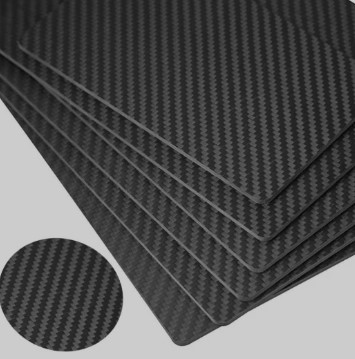Introduction
Pickleball has gained immense popularity in recent years, and manufacturers are constantly looking for ways to improve the sport. One of the latest developments in pickleball equipment is the use of Carbon Fiber plate for pickleball paddles and sheets on paddles. This innovative technology has elevated pickleball paddles to a whole new level, providing players with improved performance and durability. In this article, we will explore the benefits of using carbon fiber plates and sheets on pickleball paddles.
What is Carbon Fiber?
Before we delve into the benefits of using carbon fiber in pickleball paddles, let’s first understand what it is. Carbon fiber is a strong and lightweight material made up of thin strands of carbon atoms bonded together in a crystalline structure. These strands are then woven into sheets or combined with resin to create plates. The result is a lightweight and incredibly strong material that is used in various industries, including aerospace, automotive, and now sports equipment.
Benefits of Carbon Fiber in Pickleball Paddles
- Lightweight
One of the most significant benefits of using carbon fiber in pickleball paddles is its weight. Carbon fiber is much lighter than traditional materials like wood and aluminum, making it easier for players to swing and maneuver their paddles. This results in faster reaction times on the court and better overall performance.
- Increased Power
The stiffness of carbon fiber allows for more power transfer from the paddle to the ball. With a traditional paddle, some energy can be lost as the paddle bends upon impact. However, with a carbon fiber paddle, the energy is efficiently transferred to the ball, resulting in more powerful shots.
- Enhanced Control
Carbon fiber paddles offer improved control and precision due to their lightweight and stiff nature. The lightweight design allows players to make quick adjustments and maneuver their paddle with ease, while the stiffness provides better accuracy and consistency in shots.
- Durability
Another significant advantage of using carbon fiber in pickleball paddles is its durability. Carbon fiber is much stronger than traditional materials, making it less susceptible to wear and tear. This means players can expect their carbon fiber paddle to last longer and withstand heavy gameplay without showing signs of damage.
Types of Paddles with Carbon Fiber Plates and Sheets
- Full Carbon Fiber Paddles
These paddles are made entirely of carbon fiber and offer the most lightweight and stiff design. They are generally more expensive than other types of paddles but provide maximum performance on the court.
- Hybrid Carbon Fiber Paddles
Hybrid carbon fiber paddles have a combination of carbon fiber and other materials, such as fiberglass or polymer. These paddles offer a balance of performance, durability, and price.
- Carbon Fiber Overlay Paddles
These paddles have a layer of carbon fiber on the face of the paddle but are made primarily of another material like wood or aluminum. They provide some of the benefits of carbon fiber without the high cost.
How to Choose the Right Carbon Fiber Pickleball Paddle
Selecting the perfect carbon fiber pickleball paddle can significantly impact your performance on the court. When choosing a paddle, consider factors such as your playing style, skill level, and budget. Beginners might benefit from hybrid carbon fiber paddles, which offer a balance of performance and affordability. More advanced players looking for maximum power and control may prefer full carbon fiber paddles. Additionally, it’s essential to try out different paddles to see which one feels most comfortable in your hand, as grip size and paddle weight can vary.
Maintenance Tips for Carbon Fiber Paddles
Proper care and maintenance can extend the life of your Carbon Fiber sheet for pickleball paddles paddle. Always store your paddle in a dry, cool place away from direct sunlight to prevent damage from UV rays and moisture. After gameplay, wipe the paddle with a damp cloth to remove dirt and sweat. Avoid using harsh chemicals or abrasives, as these can damage the carbon fiber surface. Additionally, consider using a paddle cover during transport to protect it from scratches and impacts. Regularly inspecting your paddle for signs of wear and tear can help you address any issues before they become more significant problems.
Conclusion
using carbon fiber plates and sheets in pickleball paddles has revolutionized the sport, providing players with lightweight, powerful, and durable equipment. With various types of carbon fiber paddles available on the market, players can choose one that best fits their playing style and budget. As technology continues to advance, we can expect to see even more innovative developments in pickleball equipment. So why not upgrade your paddle with carbon fiber and take your game to the next level? Happy Pickling!

